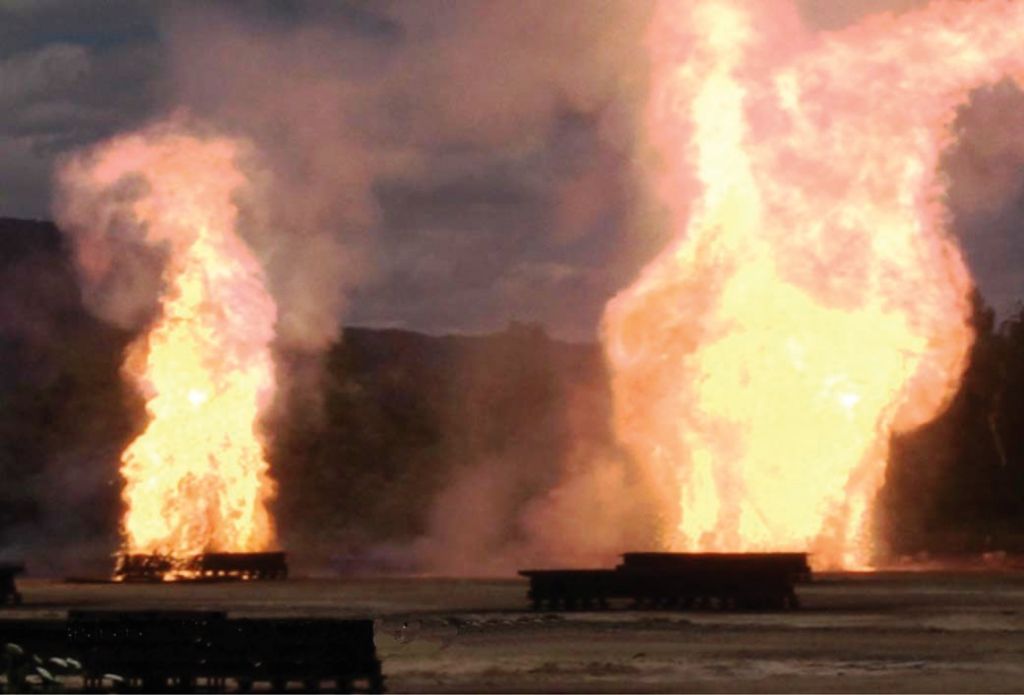
by Suzanne Yohannan, Inside Washington Publishers –
Local citizen groups are petitioning EPA Region 4 to block the U.S. military from using thermal methods for disposing of explosives and other materials containing per- and polyfluoroalkyl substances (PFAS) at a Tennessee Army ammunition plant, putting new pressure on the military as it seeks to dispose of items containing the chemicals.
In a July 16 letter to EPA Region 4 Administrator Mary Walker, two citizen groups — Citizens for Safe Water Around Badger (CSWAB) and Volunteers for Environmental Health and Justice — petition the regional office for an immediate order to bar DOD from open burning or open detonation (OB/OD) or use of other thermal treatment of all PFAS-contaminated materials or wastes, such as excess or unstable explosives, at the Holston Army Ammunition Plant in Kingsport, TN.
They say such disposal methods present an imminent and substantial endangerment to human health and the environment, invoking standards in federal waste laws.
The groups in a July 22 press release say Holston is a major supplier of RDX- and HMX-based explosives to DOD, noting that with HMX, fluorinated polymers are added to make the product rubbery and lower the likelihood of an unplanned explosion due to shock. The polymers may contain PFAS, a source with CSWAB says.
If the petition is successful, it could also make it more difficult for DOD to justify thermal treatment of aqueous film-forming foam (AFFF), a firefighting foam that contains PFAS, as well as other PFAS-containing explosives or materials in other regions.
The petition expands on environmentalists’ past efforts to block the military from disposing of material containing perfluorinated compounds, fearing DOD may be rushing to incinerate PFAS-containing AFFF before EPA or Congress moves to explicitly create Superfund liability for PFAS contamination by listing some of the materials as “hazardous substances.”
While environmentalists and others have been heavily focused on DOD’s use of PFAS in AFFF, including DOD’s incineration of stockpiles of AFFF, they have not placed as much attention on PFAS in explosives, though last year CSWAB succeeded in persuading Kentucky regulators to add a condition barring OB/OD of PFAS and asbestos at the Army’s Blue Grass Army Depot in Richmond, KY.
The push by environmentalists to block DOD from burning PFAS materials at a major Army ammunition plant is the latest volley against the DOD over its disposal and other practices related to PFAS.
The class of thousands of toxic, persistent, bioaccumulative chemicals have been linked to adverse health effects including certain cancers, thyroid conditions and other issues. While they are known for their non-stick qualities, they have drawn significant public scrutiny and calls for regulation after being discovered in drinking water supplies around the country.
House Legislation
The Defense Department has been under fire for its use of AFFF containing PFAS, which has triggered potentially significant liability for DOD across multiple sites. It has identified 401 active or closed bases with known or suspected releases of PFAS.
A broader measure than the one sought at Holston passed the House earlier this month aimed at AFFF incineration. That measure, which is included in the House fiscal year 2020 defense authorization bill, would block DOD from incinerating PFAS materials unless it could show they were fully destroyed and not emitted into the air. The Senate version of the bill does not contain similar language, making its future prospects uncertain.
“Our military is storing and planning to destroy millions of gallons of materials that contain PFAS,” Rep. Andy Levin (D-MI) said in a July 12 press release on the amendment, which he co-sponsored. “These materials need to be destroyed, but it must be done in a way that does not introduce more harmful chemicals into the air we breathe or the water we drink.”
DOD has adopted measures to limit releases to groundwater stemming from disposal practices. The department has had a policy since January 2016 aimed at preventing releases to groundwater that in part requires the military services to “properly dispose of local warehouse supplies of AFFF containing PFOS . . . where practical,” DOD environment chief Maureen Sullivan told a Senate panel last September.
Each service “is taking actions to remove this AFFF containing PFOS from its inventory,” she said.
Now the effort to block DOD from open-burning or open-detonating explosives that contain PFAS — if successful — could also have repercussions for the department on its incineration of AFFF.
The groups in the press release say that the Army at Holston in 2012 reported that “it expected to generate approximately 120,000-150,000 pounds (measured as net explosive weight) per year requiring disposal in the burn pans over the subsequent five years included nonconforming PBXs — a potential source of PFAS.”
In the letter, they point out that OB/OD is typically at a temperature — 727 degrees Celsius — that is not high enough to destroy certain PFAS. For instance, they say perfluorooctane sulfonate (PFOS) — a common PFAS — is thermally resistant at temperatures under 1,100 degrees Celsius.
They note that while Kentucky regulators have blocked OB/OD of PFAS at Blue Grass Army Depot, they do not know of any permits issued by the state of Tennessee that address potential sources, management or treatment of fluoropolymers and other PFAS at Holston.
They ask for a ban on OB/OD of such substances and a detailed quantification of PFAS wastes received, handled, stored and treated at Holston.
-end-

